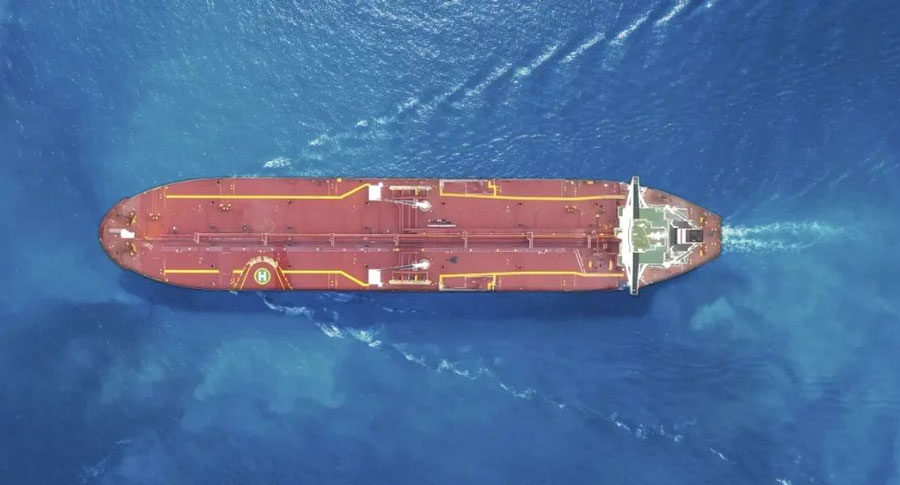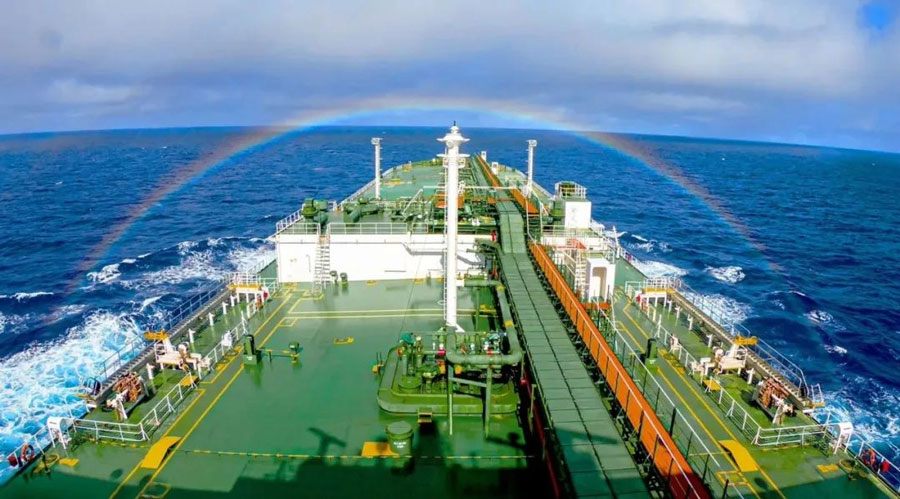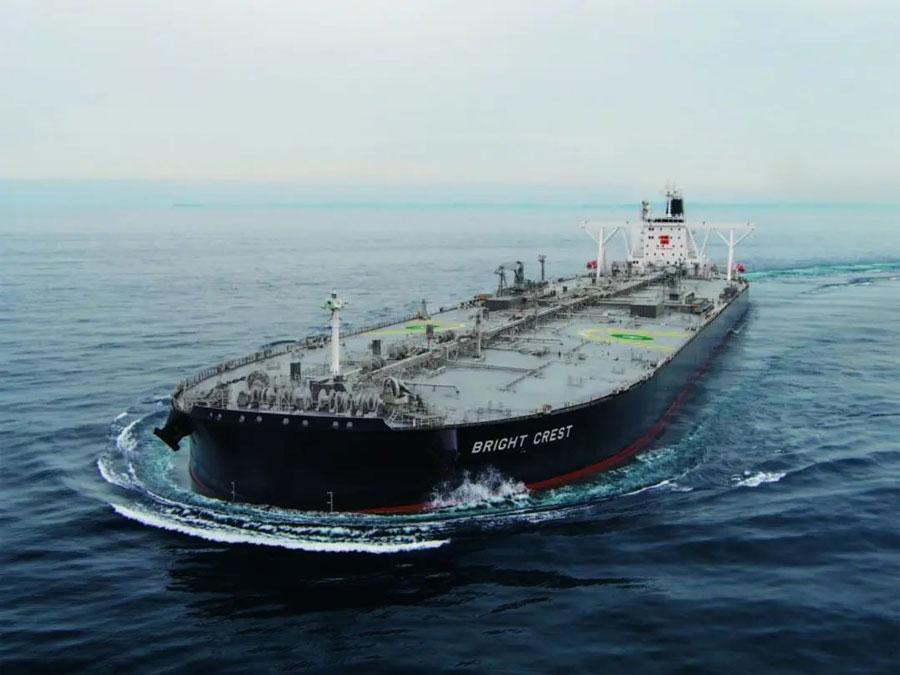

Global tanker freight rates are expected to rise in 2025
Despite the ceasefire in the Gaza Strip, global tanker freight rates are expected to generally rise in 2025 due to US sanctions and geopolitical turmoil. However, new ship deliveries and the ability of tankers to quickly switch between "dirty" oil (such as crude) and "clean" oil (such as refined products) will limit freight rate gains.
More than half a dozen Suezmax tankers have recently tried to carry clean oil in search of higher yields, but those plans have mostly failed to materialize as rates for dirty oil have also risen. Market participants at the Singapore Maritime Foundation (SMF) event said tankers will switch between clean and dirty oil more frequently in the future than in the past.
"VLCCS are expected to perform better this year, while MR Tankers are likely to see some decline in earnings," said Ole-Rikard Hammer, senior analyst at Arctic Securities in Oslo. According to brokers' estimates, more than 100 new Mrs Will enter service this year.
Edward Finley-Richardson, a Bordeau-based shipping analyst at Contango Research, noted that taking into account the latest and previous sanctions announcements, about 10 percent of the world's VLCC and Suise tankers and 18 percent of Aframax tankers were already on the sanctions list. Of these, 75% of Afra tankers spend at least half their time transporting Russian cargoes, a dynamic that could even prompt the LR tankers to shift to carrying dirty oil.
Ole-Rikard Hammer said much depends on how sanctions are implemented, as they could push more oil trade to the open market, which is good news for fleets that are not sanctioned. He singled out Russian energy producers Gazpromneft and Surgutneftegas, which exported a combined 1 million barrels per day last year, and Ingosstrakh and Alfastrakhovanie, the country's two largest insurance companies, as being included in the U.S. sanctions for the first time.
Edward Finley-Richardson believes that as the pressure on Afra tankers increases, VLCCS will replace them in the short term. According to Commodity Insight data, the benchmark VLCC freight rate on the Persian Gulf to China route has broken through the key psychological level of w70, compared with the valuation of w48.50 when the latest round of US sanctions was announced on January 10.
Ole-Rikard Hammer added that global oil demand is rebounding after a disappointing year, driven by a recovery in Chinese oil demand and imports.
While the new round of US sanctions has been supportive of freight rates, a ceasefire in Gaza could limit them if more goods start moving through the Suez Canal.
Ole-Rikard Hammer said any easing of tensions in the Red Sea would allow more ships to pass through, reducing demand for ton-nautical miles.
Enrico Paglia said freight rates would largely depend on new ship deliveries and the complete dismantling of tankers. Currently, more than half of the world's tanker fleet is over 15 years old, and more than a fifth are over 20 years old. He revealed that 200 tankers are expected to be delivered in 2025, double the number in 2024.
According to Ole-Rikard Hammer, the ability of tankers to switch flexibly between sanctioned and non-sanctioned trade, or to be squeezed by strict enforcement of sanctions, is a more important factor than outright dismantling.
More than half a dozen Suezmax tankers have recently tried to carry clean oil in search of higher yields, but those plans have mostly failed to materialize as rates for dirty oil have also risen. Market participants at the Singapore Maritime Foundation (SMF) event said tankers will switch between clean and dirty oil more frequently in the future than in the past.

"VLCCS are expected to perform better this year, while MR Tankers are likely to see some decline in earnings," said Ole-Rikard Hammer, senior analyst at Arctic Securities in Oslo. According to brokers' estimates, more than 100 new Mrs Will enter service this year.
Edward Finley-Richardson, a Bordeau-based shipping analyst at Contango Research, noted that taking into account the latest and previous sanctions announcements, about 10 percent of the world's VLCC and Suise tankers and 18 percent of Aframax tankers were already on the sanctions list. Of these, 75% of Afra tankers spend at least half their time transporting Russian cargoes, a dynamic that could even prompt the LR tankers to shift to carrying dirty oil.

Ole-Rikard Hammer said much depends on how sanctions are implemented, as they could push more oil trade to the open market, which is good news for fleets that are not sanctioned. He singled out Russian energy producers Gazpromneft and Surgutneftegas, which exported a combined 1 million barrels per day last year, and Ingosstrakh and Alfastrakhovanie, the country's two largest insurance companies, as being included in the U.S. sanctions for the first time.
Edward Finley-Richardson believes that as the pressure on Afra tankers increases, VLCCS will replace them in the short term. According to Commodity Insight data, the benchmark VLCC freight rate on the Persian Gulf to China route has broken through the key psychological level of w70, compared with the valuation of w48.50 when the latest round of US sanctions was announced on January 10.

Ole-Rikard Hammer added that global oil demand is rebounding after a disappointing year, driven by a recovery in Chinese oil demand and imports.
While the new round of US sanctions has been supportive of freight rates, a ceasefire in Gaza could limit them if more goods start moving through the Suez Canal.
Ole-Rikard Hammer said any easing of tensions in the Red Sea would allow more ships to pass through, reducing demand for ton-nautical miles.

Enrico Paglia said freight rates would largely depend on new ship deliveries and the complete dismantling of tankers. Currently, more than half of the world's tanker fleet is over 15 years old, and more than a fifth are over 20 years old. He revealed that 200 tankers are expected to be delivered in 2025, double the number in 2024.
According to Ole-Rikard Hammer, the ability of tankers to switch flexibly between sanctioned and non-sanctioned trade, or to be squeezed by strict enforcement of sanctions, is a more important factor than outright dismantling.





